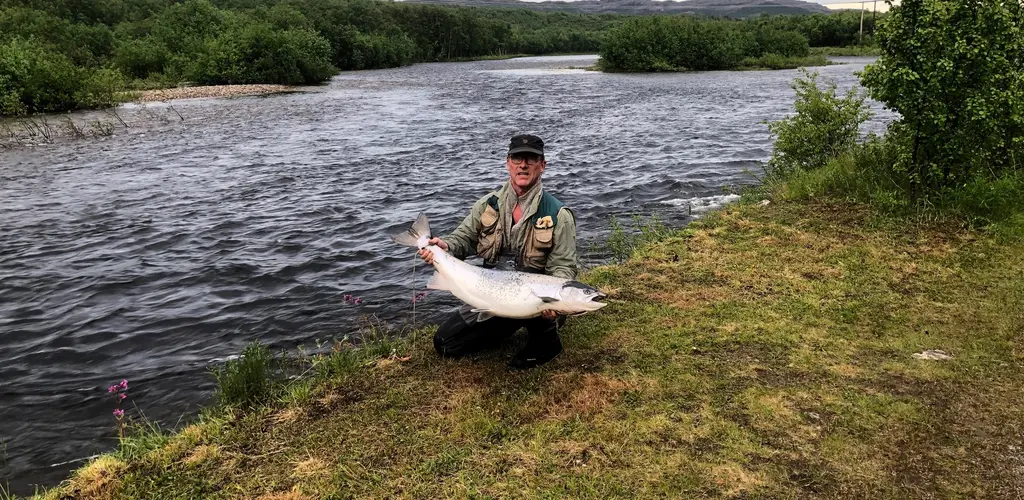

The salmon season of 2019 is over
The calendar currently shows the 3rd of September, and as always when the salmon season is over, I'm left with the feeling that it all started just a few days ago. However, three months have passed, and we can't undermine the fact that is occasionally has been three rather demanding months to be a salmon fisherman.
Things were looking good
At the season start, things were looking good, the water level was good and there were few, if any indications from the river, that this season should turn out to be the poorest in many years. Even though the season start didn't show any bonanza, the fish being caught was big and in beautiful condition. We may experience good fishing in Lakselva as early as around the 20th of June, but it's first well into July we start to see stable, good catches - as well as indications on how the season will end up.
The release that never came
Lakselva is a late river, so even though catches were low, and fish were quite scarce, we clinged to a hope that it was just another example of a late run of fish. Because of this, the board decided to keep their cool with regards to inducing any extra-ordinary efforts, knowing how the river may act. When the board met again on the 5th of August, and there wasn't any major improvement, the protection of salmon over 80 centimeters were introduced. Given the circumstanses, this was a correct decision, and we are now awaiting the spawning count, which will give us more information of the current season.
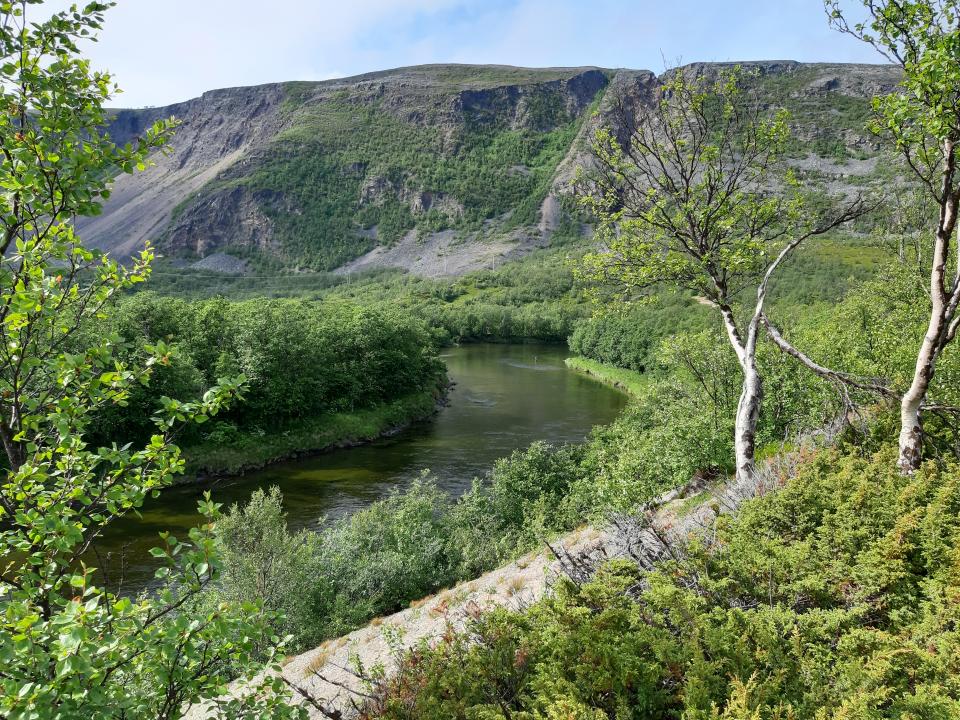
Extremely low water
After having experienced a sunny and dry 2018, we had a just as dry 2019. Very little rain, in combination with the maintenance work at the hydroelectric power plant in Luostejohka (Lakselva's biggest tributary), rendering the plant out of function, we measured the lowest water level in Skoganvarre for as long as we can remember, with less than 5 m3 on the measuring gauge. The picture above is from the 18th of July, when the measuring gauge allready showed as little water as 10 m3 in Skoganvarre. Luckily for the salmon, the water remained cold, so it shouldn't have affected the salmon to any major negative extent.
Pink salmon
One of our major fears for 2019, was whether or not the predictions regard pink salmon would come true. In hindsight, it's safe to say that they were. Other rivers were more affected that ours, both we saw way more pink salmon in 2019, than what we have done ever before. Some were fished out by our fishermen, and some were taken by a net. Net fishing them might prove effective, but there are challenges in this river, making it impossible to do in many places.
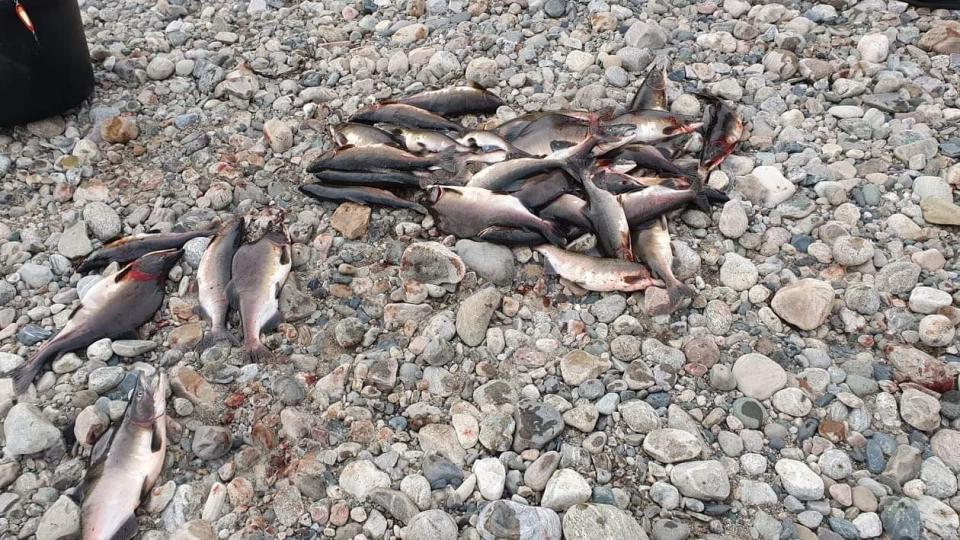
How the pink salmon will affect our river in years to come is difficult to predict. A lot of focus has been guided in it's direction, but we do not yet know how this will turn out. What we do observe, is that the pink salmon may behave aggressively towards other fish, and in these cases there will be interspecific competition between pink salmon and our local stocks of salmon, sea trout and sea char.
Challenges with salmon farms
What we do know that affects our populations of wild Atlantic salmon, is problems related to the salmon farming industry. During the migratory period for our smolt this year, the one salmon farm in Vedbotn (in the Porsanger fjord), measured more sea lice than their legal limit for several weeks in a row. Sea lice is regarded as one of the absolute biggest threats to the survival of our salmon stocks, and the expansion of salmon farm in Finnmark should be of equal, if not a bigger concern for our salmon river, than that of pink salmon.
Some positivity
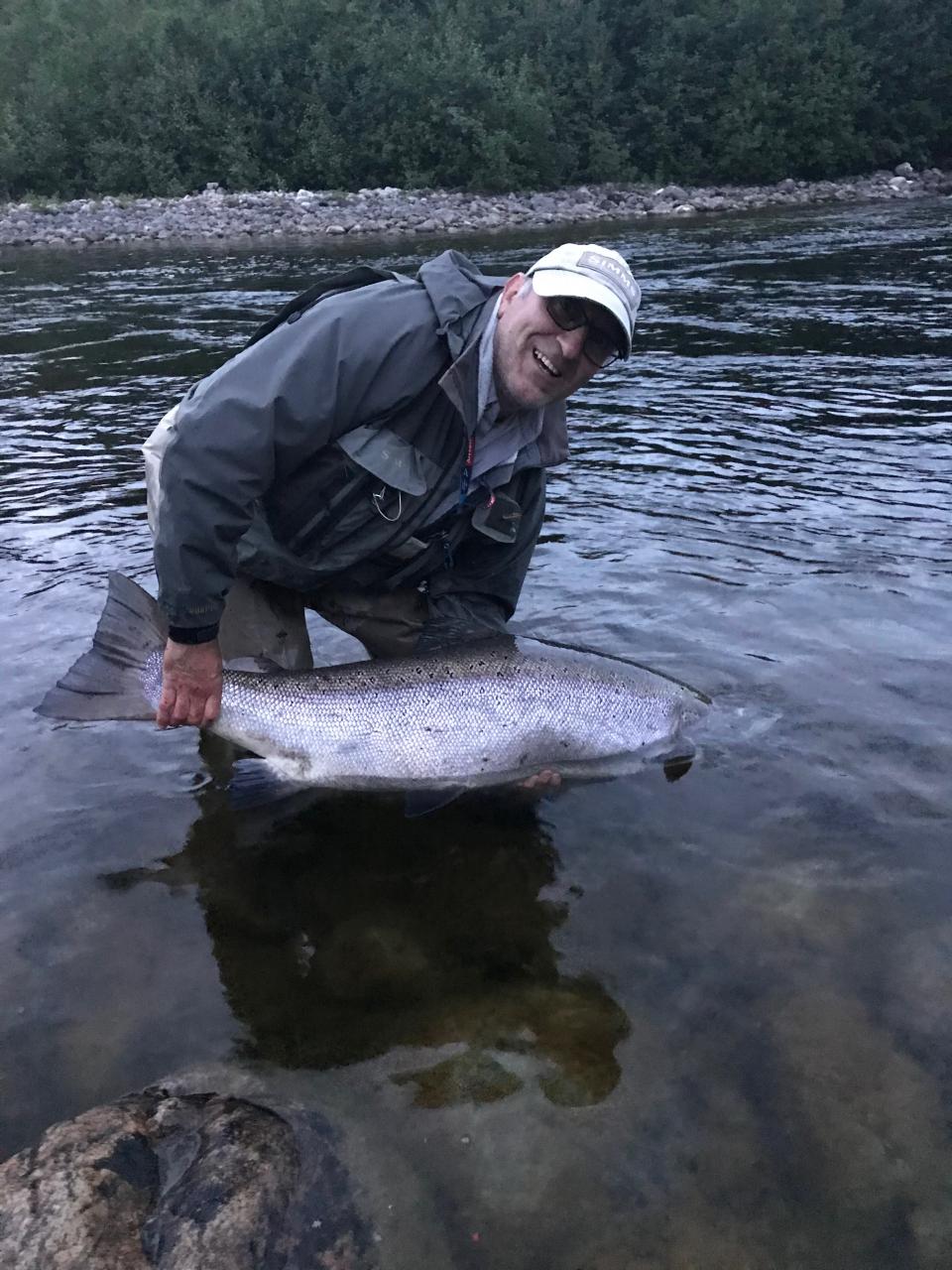
Even through this season, there are some positive signs. The biggest salmon of the season was landed by Esteban Garcia, in zone 3. This salmon was three centimeters shorter than the monster fish from 2016, but with more girth, the weight estimated of 24 kilos should be quite accurate.
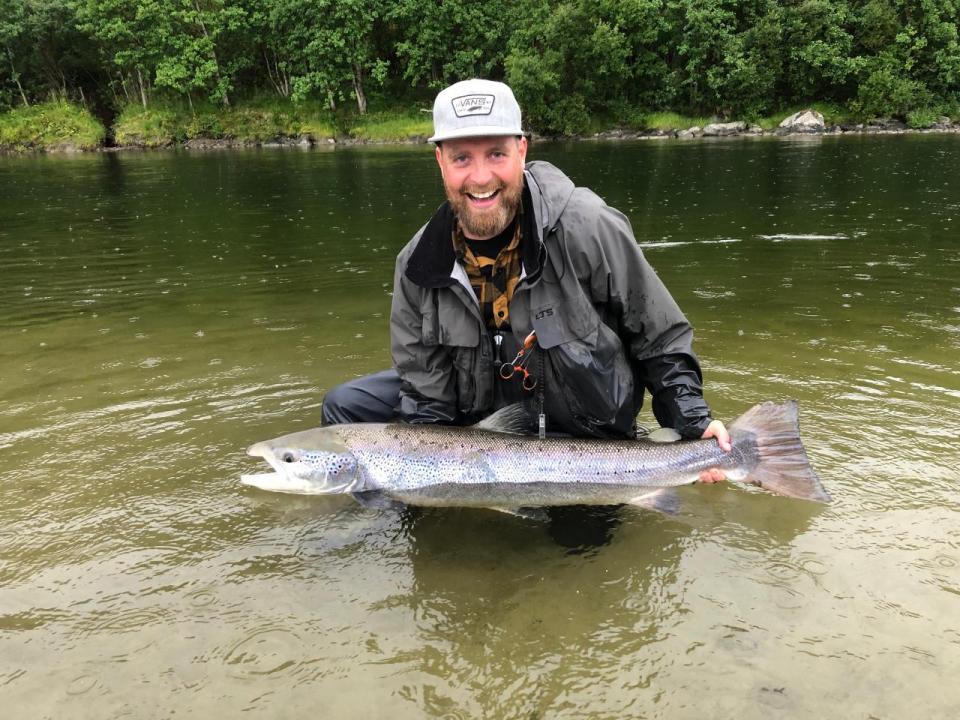
An other impressive fish, was this amazing henfish of a whopping 128 centimeters, landed by Jarand Pedersen in zone 1. Is this the biggest henfish of 2019, in entire Norway?
The engangement of our fishermen
In seasons like these, there is no doubt that we recieve more worried inquiries from the audience, than in other seasons. We look at this as a positive sign, and a sign that there is a clear and visible engagement among our fishermen. The most common feedback, is the protection of big female fish. Looking at the agreed measures before season start, this is also the first thing we are to introduce if things are looking bleak, and the spawning targets don't seem to be reached. This is considered every season, and the mid season evaluation looks at catches, observations of the river - both above and beneath the surface. Analyzing catches, drift counts and other observations, the board has a good foundation to make the correct decisions, and to induce, or choose to not induce any extra-ordinary limitations during the season.
There are also some culturally conditioned factors that need a place in the equation. Local fishing culture and local adaptions, play an occasionally important role in salmon management in Finnmark. This is to be both respected and accepted, though it's never a good feeling to have well founded advice from scientist being dismissed based on cultural aspects. This creates mistrust and undermine the knowledge among scientists and other professionals. The challenge is to find a balance that takes most considerations into account, as well as it makes sure that we also have salmon to fish for in the future. Anyway, given this, simply protecting all female fish, though it may seem as a very positive thing, is not necessarily an easy task to do.
Since 2007, we have reached our targets with spawning fish, and this is the most important management tool we are measured on. Even with a poor season in 2019, and a mediocre season in 2018, we are still careful not to maximize the crisis. Let's say we are more alert, and then we will make another assessment once we have done the spawning fish count, if there are a need to do any changes to quotas and such.
Are the challenges somewhere else?
Since all of Finnmark, with a few exeptions, had a decline in catches this year, we need to ask the question if there are some larger scale effects, affecting this season. Even though we all have a responsibility to follow the quotas, and not kill more fish than we are allowed to, we seem to have the situation under control in the river. However, the knowledge of what happens when the salmon leaves the river is quite poor, and we're hoping there will be a higher focus on this in years to come. We are more than happy to assist in any future research in Lakselva.
For now, I say thank you for yet another season!

